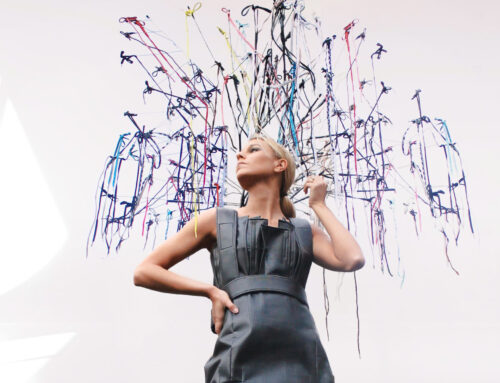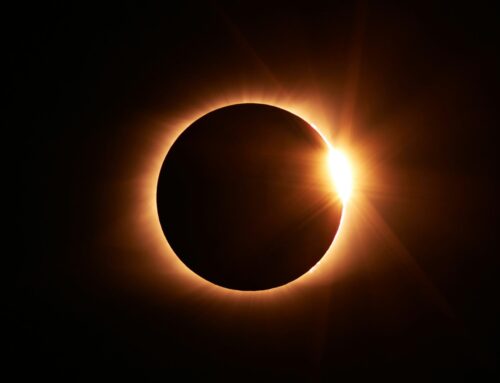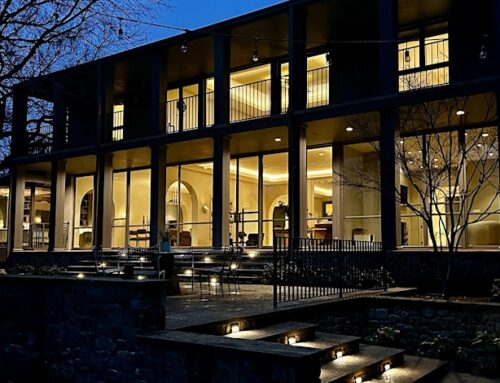One tiny portion of Preston Hollow has been called the “most unique neighborhood in Dallas.” The real surprise is what makes it unique.
While much of our neighborhood is known for teardowns, shade trees or stately homes, for years this street has been marked by color.
“It was the first neighborhood in Dallas built for African-Americans by African-Americans,” says someone who should know — Jesse Arnold, a 74-year-old who once picked cotton on the land he has called home for 33 years.
Perhaps you already know about McShann Road and its history of becoming an affluent black neighborhood when affluent black neighborhoods in this city didn’t exist.
What you probably don’t know is that McShann Road is changing, and what people have typically referred to as “that black street” is becoming, according to its residents, a true American “melting pot.”
•••
Ask anyone who lives on McShann Road in Preston Hollow about its history, and they all say the same thing: Talk to Jesse.
When he was 12 years old, Arnold was employed as a cotton-picker by Will and Diza McShann, who were freed slaves.
It was one of many, mostly domestic, jobs that Arnold held early in life.
“My mother would take me sometimes to work with her,” he says of his childhood. “She would tell the people for whom she worked: ‘I would like to bring my kids one by one to just be with me while I’m here. They won’t touch nothing. I want them to see this good stuff, so someday if they never have it and can’t get it, they’ll still know when they see it.’”
Those early experiences “rubbed off on me,” Arnold says.
“I would pay close attention to the decoration of the house, whether they had certain pieces of furniture, what the various color schemes were,” he adds. “As a kid, I wanted to live rich. I wanted to live like white folk.”
This desire to succeed led Arnold to become a teacher. He began substituting for DISD in 1953 and started full-time in 1958. In 1967, he realized yet another dream when he bought a lot on McShann and built a house he moved into four years later.
McShann Road is just south of Interstate 635, spanning two long blocks between Montfort to the west and Preston to the east. In its heyday, the street was just like any other neighborhood. Young couples invited other young couples over for dinner and drinks. Kids played together outside. Homeowners waved at each other as they left for work, and they tended to their manicured lawns on the weekends.
The only difference was that all McShann Road’s residents were black.
The road initially was developed in the mid 1950s, the dream of Mr. McShann and his brothers, who wanted a suburban foothold for upwardly mobile African-Americans. Initially, it was planned as a community for black doctors. Later, other black professionals began moving in: “Schoolteachers, attorneys, engineers, entrepreneurs, clergy,” Arnold says.
Many Dallas residents already know about McShann Road and its history of becoming an affluent black neighborhood when affluent black neighborhoods in this city didn’t exist.
But McShann Road is also a neighborhood in transition: It’s not quite what it used to be, and not yet what it’s likely to become.
When Larry Gingold moved onto McShann 10 years ago, he was unknowingly one of the first signs of this transition. Gingold had seen a “For Sale” sign outside a home on the street and soon had it under contract.
“The first day I drove down, I saw a black gentleman out in his yard, and then another gentleman talking to another, and then another was doing some gardening. And I was like: What the heck?” says Gingold, who is Jewish. “It was no big deal, but I just thought, ‘Wow, there’s gotta be something going on here.’”
No sooner did Gingold get his moving van unloaded than Arnold showed up to welcome him and let him know what exactly was “going on here.”
“We talked for about two hours on my front driveway, and he told me about the neighborhood’s history,” Gingold remembers. “I had no clue. And at that point, I absolutely fell in love. I love streets that have a history behind them, and the history here was pretty incredible.”
Gingold found that none of his neighbors seemed to mind that he wasn’t black. “Three or four other neighbors came to welcome me. A couple brought over cakes,” he says.
In the decade since Gingold moved in, other “hues,” as Arnold is fond of calling them, have started to move in as well.
Though turnover is still slow in the neighborhood, “many of the original owners have dropped out because of wealth, death, becoming incapacitated,” he adds.
“This was a neighborhood of all black faces, but we’ve seen the face of the neighborhood change,” says Robert Prince, another longtime resident and president of the homeowners association. “Other cultures have started moving in; not just Christians, but Jews and Muslims.”
The area around McShann Road is largely Orthodox Jewish. There are four nearby Orthodox synagogues — Shaare-Tefilla, Ohr Hatorah, Young Israel of Dallas and Forest Lane Shul Chabad — and one private Jewish school, Akiba Academy. Among other things, Orthodox Jews don’t drive on the Sabbath, so proximity to the synagogue is important.
“To say we’re coming in and taking over … we’re not,” says McShann resident Aviva Hirschberg, who lives on the street with her husband Chris and son Alexander. “But if you come here in 10 or 15 years, there’s probably going to be a bunch of Jewish white people on this block. People want to live nearby because they want to be able to walk [to synagogue].”
The Orthodox population is another one of the reasons Gingold, who is a Reform Jew, likes living here. “For me, I see the Orthodox Jews walking down the street,” he says, “and I’m always reminded of my heritage.”
Despite the changing demographics, however, all the McShann residents interviewed for this story insist there have been remarkably few ruffled feathers. The biggest source of strife came when some of the surrounding neighbors approached the homeowner’s association about building a mikvah in a vacant property on McShann (a mikvah is a bathhouse for Orthodox Jewish women, who use it as a source of spiritual purification after menstruation).
“The Jewish people approached me [about the mikvah]; they wanted to find out whether it was all right,” Prince says. “They didn’t just bull in here. I had a meeting at my house, and there were several in opposition. I could see their point — that this lot was meant for a single family dwelling; that they didn’t like the idea of a bathhouse being there.
“But we met with the Jewish people, and they assured us that it would appear as a single-family dwelling, that they would follow the bylaws of the neighborhood and keep the property up. And I believed them.
“I was happy to see them come in. I felt that we had been the victims of a lot of mean things — pickup trucks driving through our yards, people tearing down our mailboxes. And I thought: ‘Well, we’ll make a good target with Jews and blacks all on the same street.’”
In fact, though he jokes about such things, Prince proudly proclaims that he now thinks McShann Road has “got to be about one of the most integrated streets in the country.”
And both he and Arnold insist that, though they have a certain amount of nostalgia for the McShann Road of old, seeing their neighborhood become more diverse gives them a source of hope and pride.
“I think this is part of what I had envisioned, naively, as a child when I took civics in the third and fourth grade. I thought America was about a melting pot, but I didn’t know they put a lot of us in different pots … black pots, red pots, yellow pots, white pots,” Prince says.
“Now, many of the ingredients are going into the same pot,” he continues. “We are a much more diverse neighborhood now, and I feel it’s good.”
Arnold agrees. “This is the way I like it,” he says. “The only way that people are going to get along is to learn something about each other, because we have different cultures. Our cultures are not the same, and they’re not supposed to be. But the more you know about each other’s culture, it makes the road better.”
“It’s part of what I lived to see,” Prince says with satisfaction. “I’m 73 now, and I’m glad I lived to see this in Dallas, Texas.”






